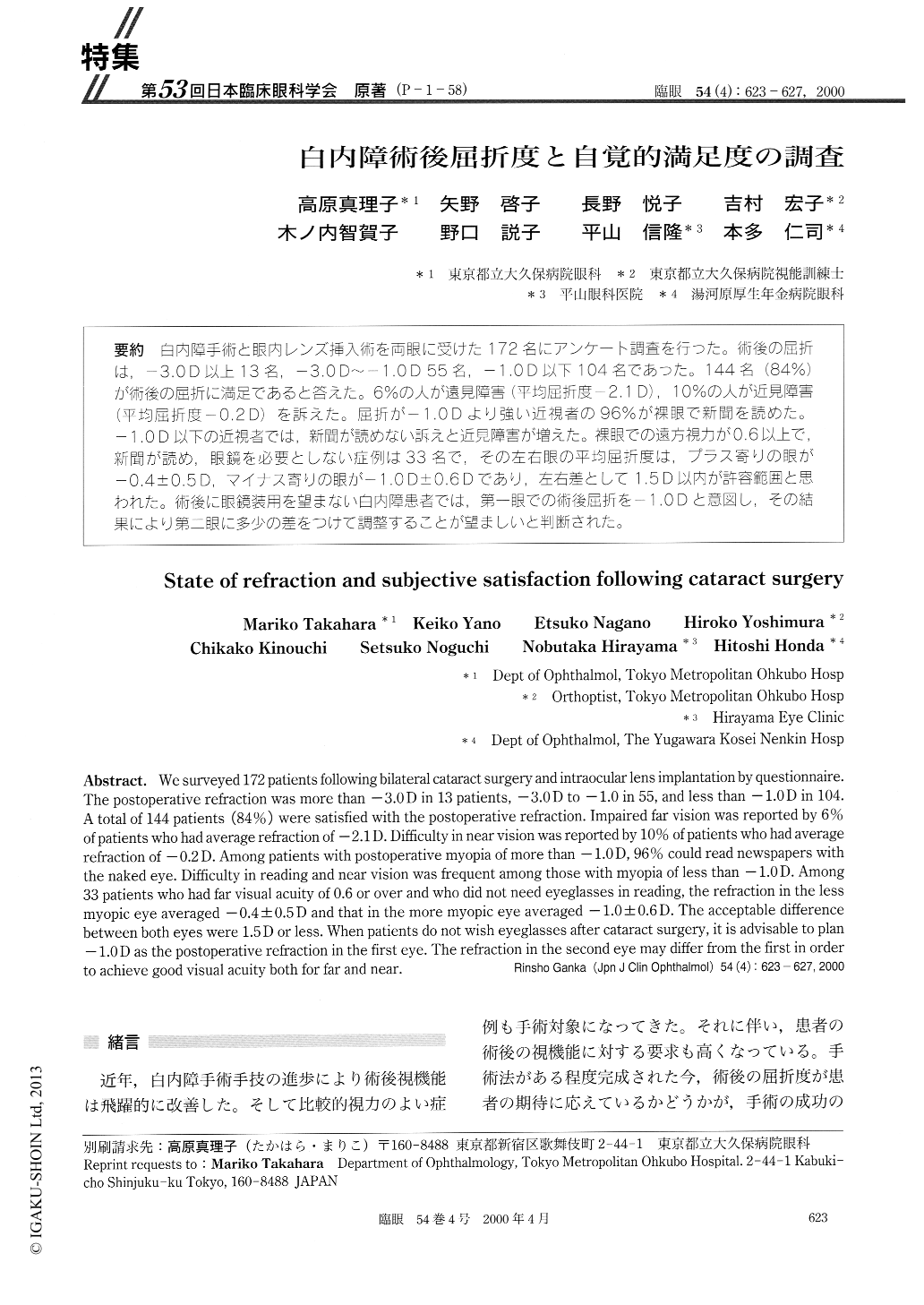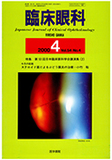Japanese
English
- 有料閲覧
- Abstract 文献概要
- 1ページ目 Look Inside
(P-1-58) 白内障手術と眼内レンズ挿入術を両眼に受けた172名にアンケート調査を行った。術後の屈折は,−3.0D以上13名,−3.0D〜−1.0D55名,−1.0D以下104名であった。144名(84%)が術後の屈折に満足であると答えた。6%の人が遠見障害(平均屈折度−2.1D),10%の人が近見障害(平均屈折度−0.2D)を訴えた。屈折が−1.0Dより強い近視者の96%が裸眼で新聞を読めた。−1.0D以下の近視者では,新聞が読めない訴えと近見障害が増えた。裸眼での遠方視力が0.6以上で,新聞が読め,眼鏡を必要としない症例は33名で,その左右眼の平均屈折度は,プラス寄りの眼が−0.4±0.5D1マイナス寄りの眼が−1,0D±0.6Dであり,左右差として1.5D以内が許容範囲と思われた。術後に眼鏡装用を望まない白内障患者では,第一眼での術後屈折を−1.0Dと意図し,その結果により第二眼に多少の差をつけて調整することが望ましいと判断された。
We surveyed 172 patients following bilateral cataract surgery and intraocular lens implantation by questionnaire. The postoperative refraction was more than -3.0 D in 13 patients,-3.0D to -1.0 in 55, and less than -1.0D in 104. A total of 144 patients (84%) were satisfied with the postoperative refraction. Impaired far vision was reported by 6% of patients who had average refraction of -2.1 D. Difficulty in near vision was reported by 10% of patients who had average refraction of -0.2 D. Among patients with postoperative myopia of more than -1.0D, 96% could read newspapers with the naked eye. Difficulty in reading and near vision was frequent among those with myopia of less than -1.0 D. Among 33 patients who had far visual acuity of 0.6 or over and who did not need eyeglasses in reading, the refraction in the less myopic eye averaged -0.4 ± 0.5D and that in the more myopic eye averaged -1.0 ± 0.6 D. The acceptable difference between both eyes were 1.5D or less. When patients do not wish eyeglasses after cataract surgery, it is advisable to plan -1.0D as the postoperative refraction in the first eye. The refraction in the second eye may differ from the first in order to achieve good visual acuity both for far and near.

Copyright © 2000, Igaku-Shoin Ltd. All rights reserved.


